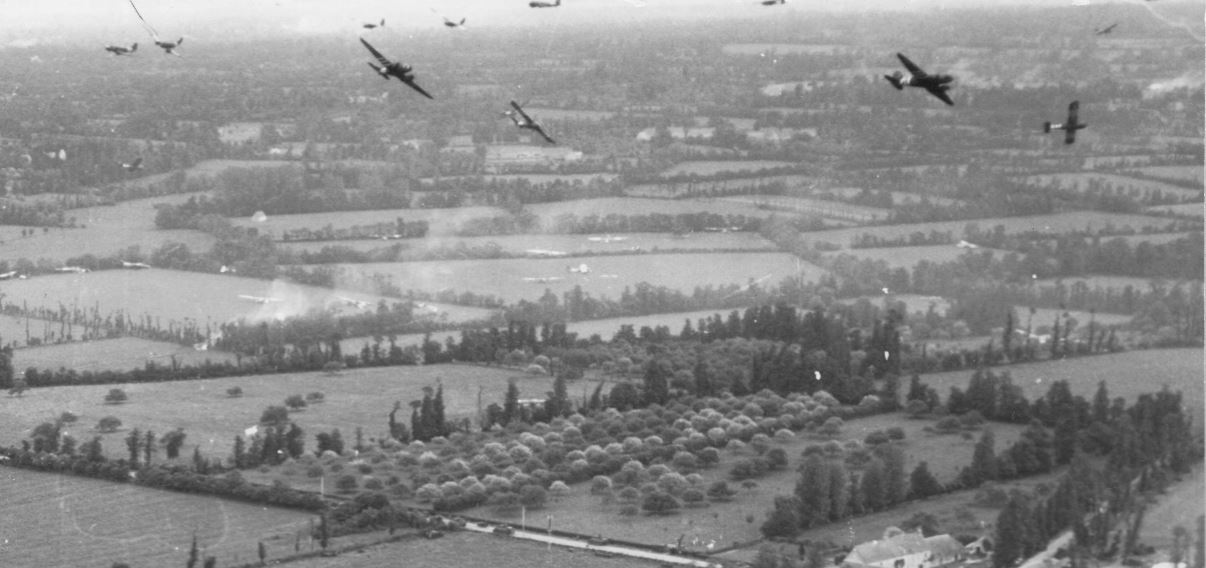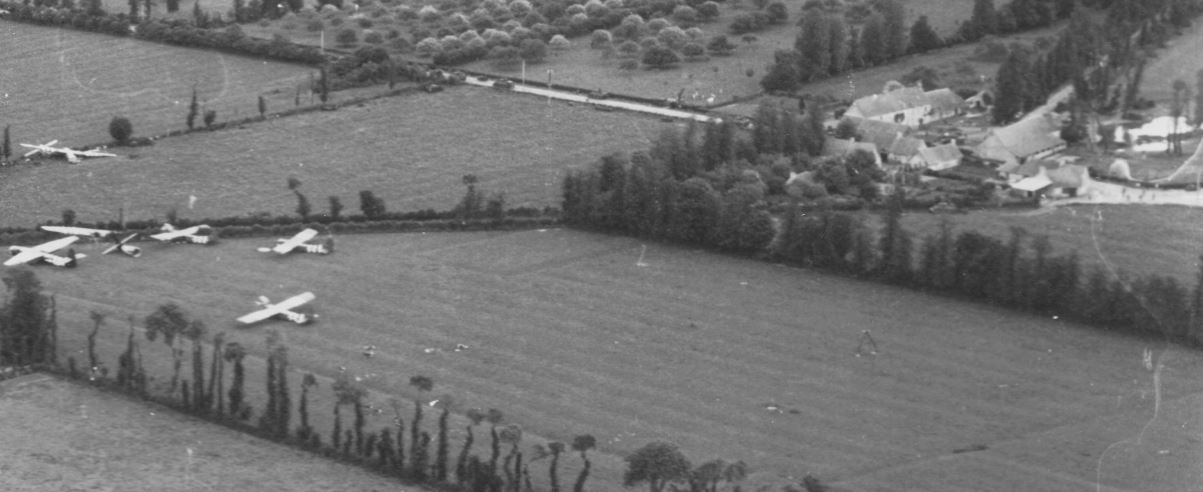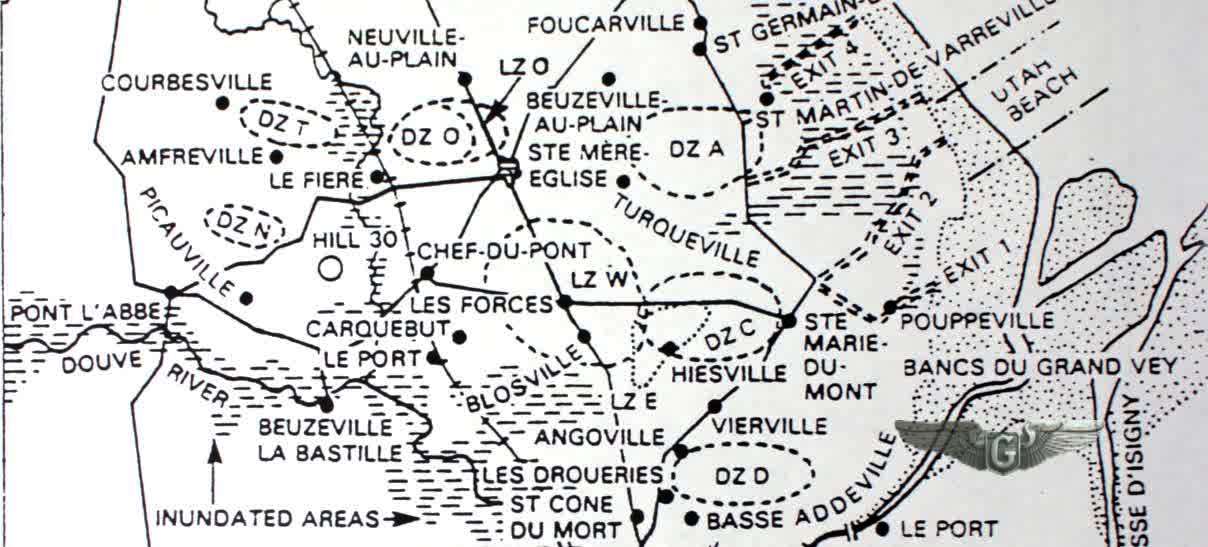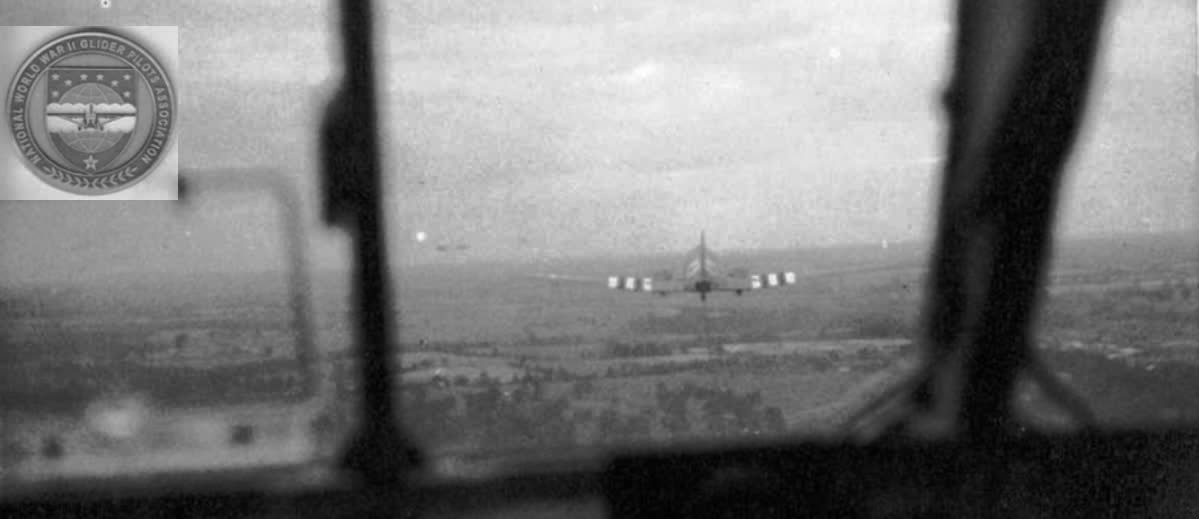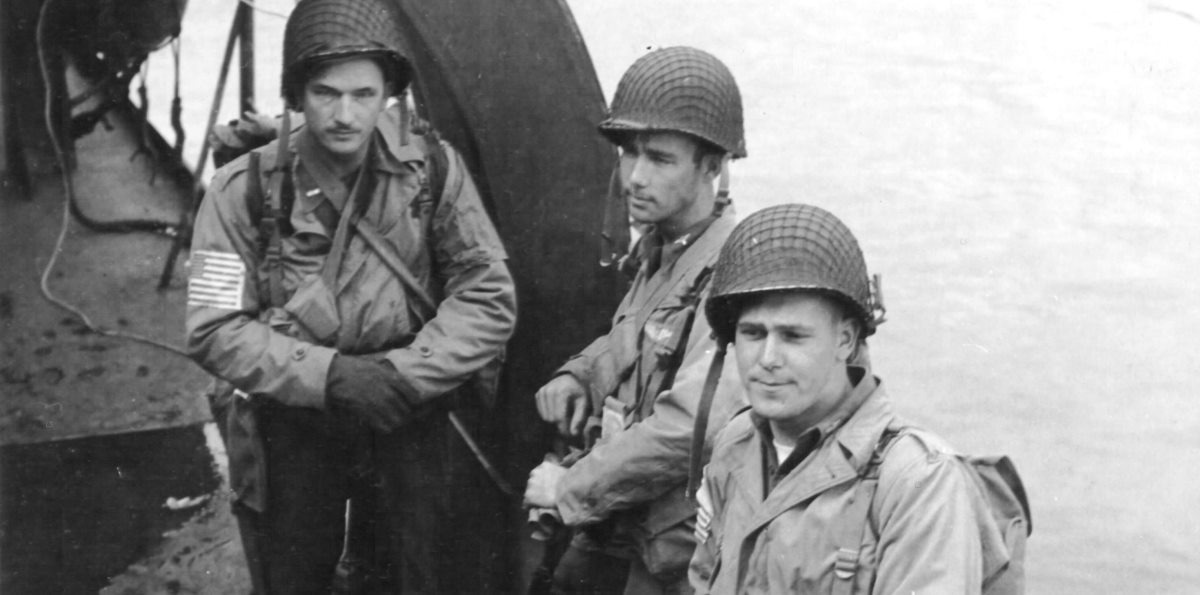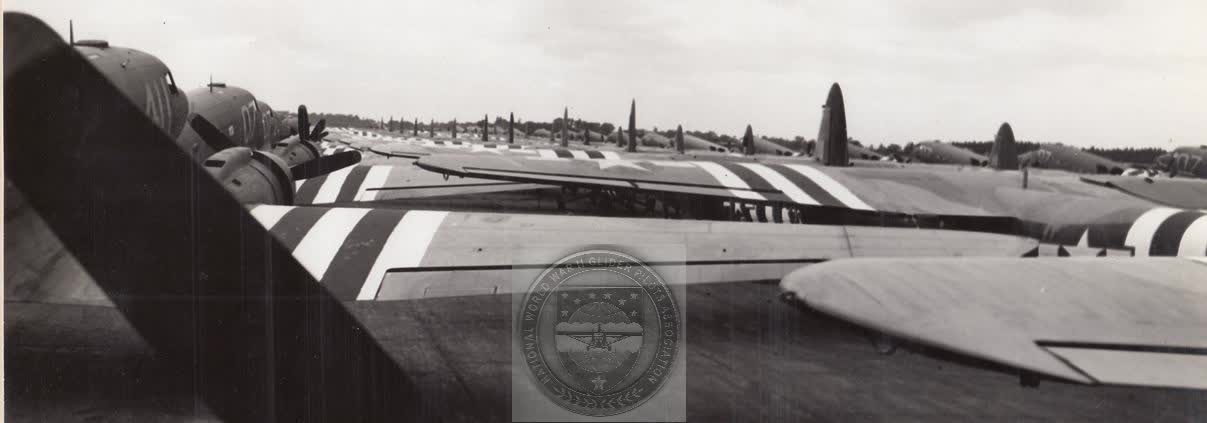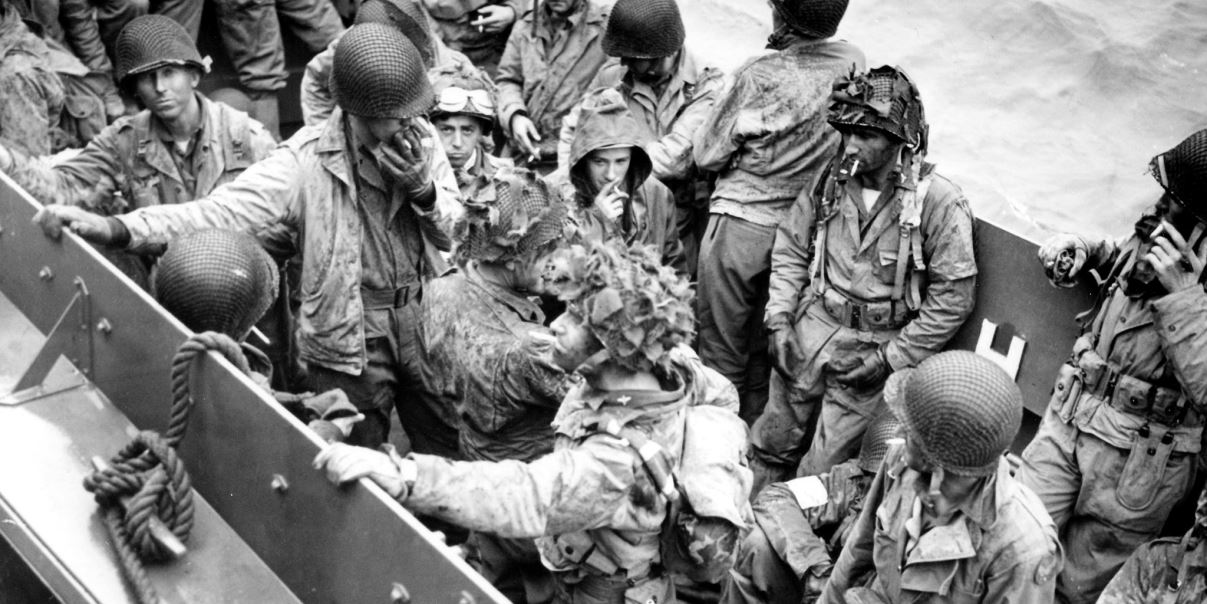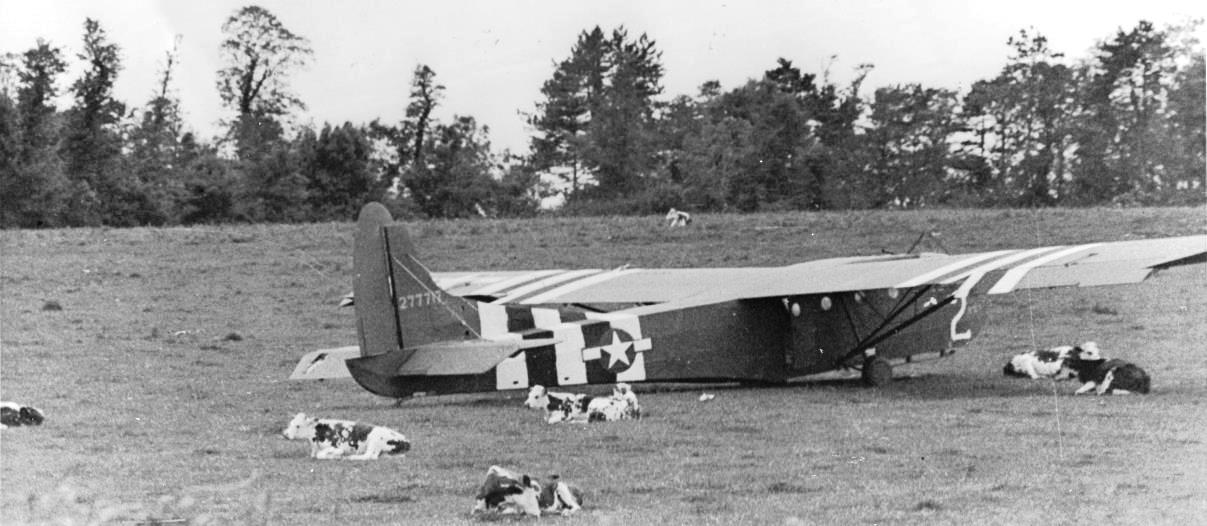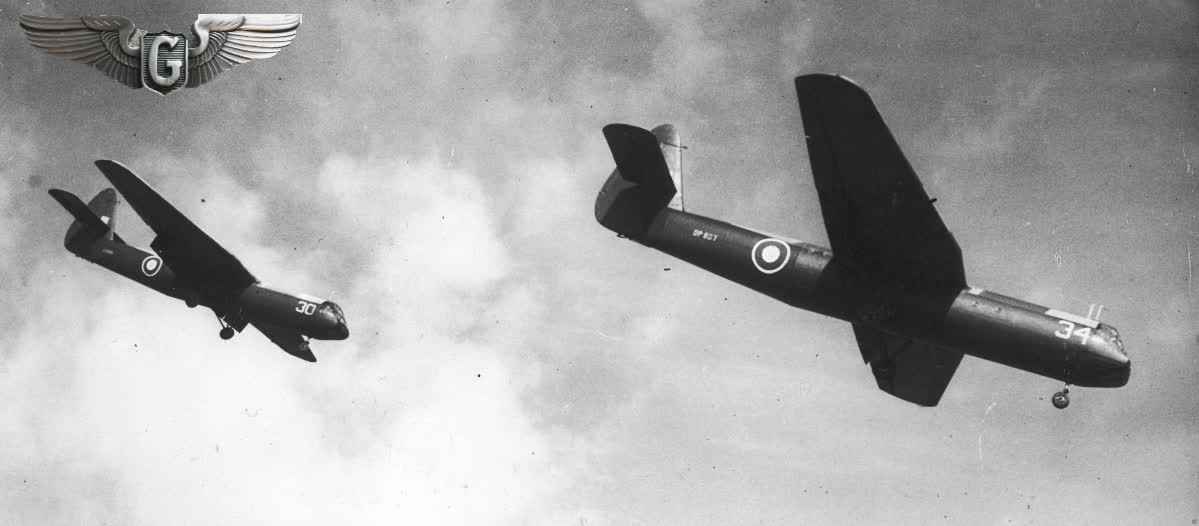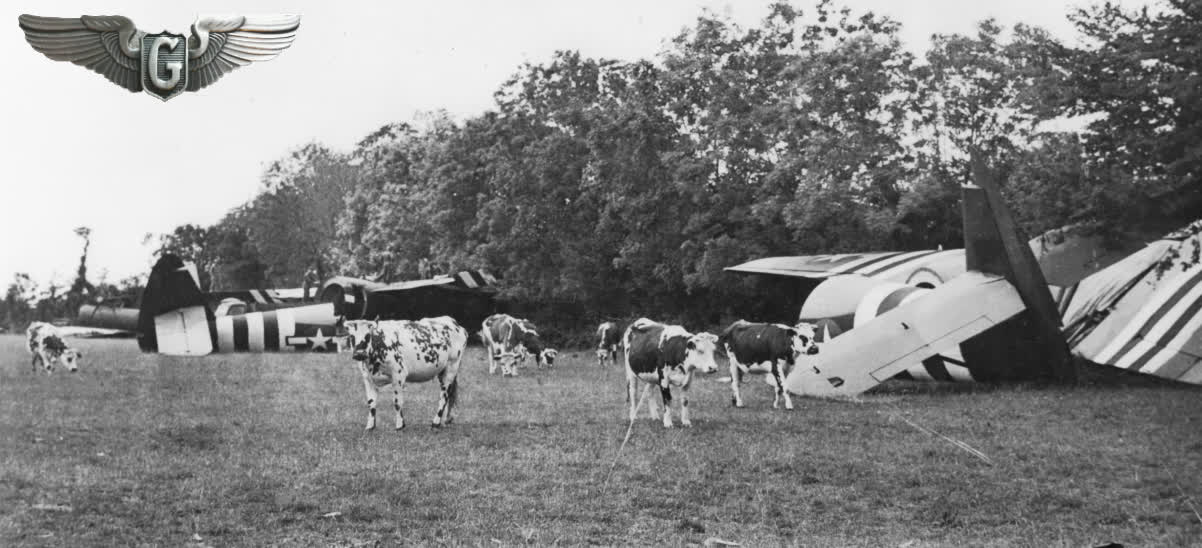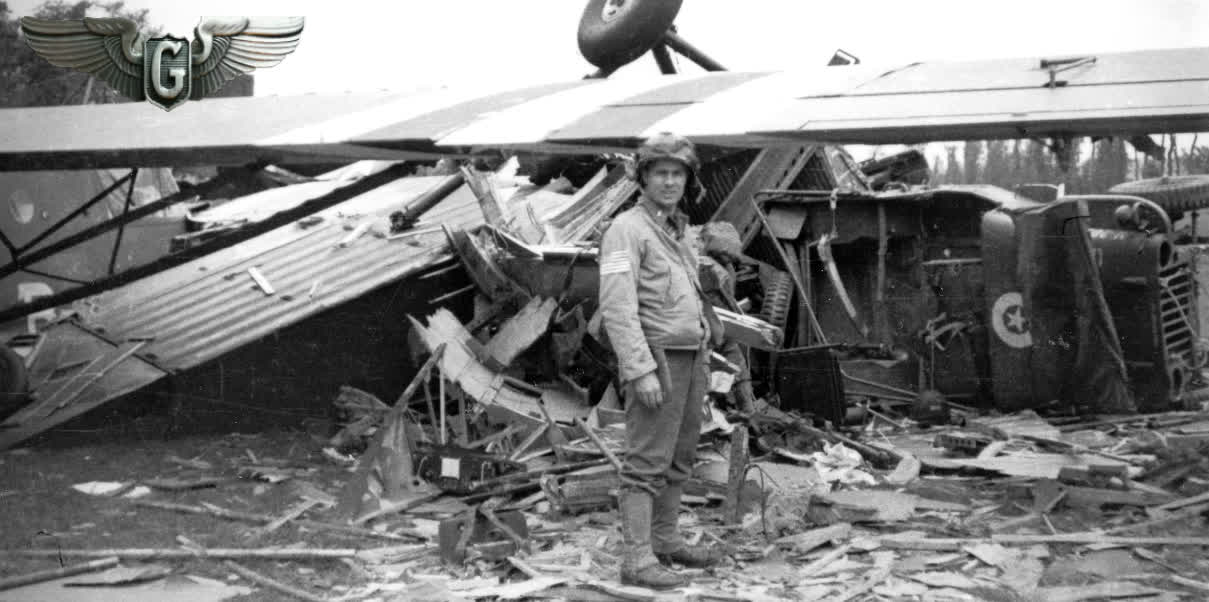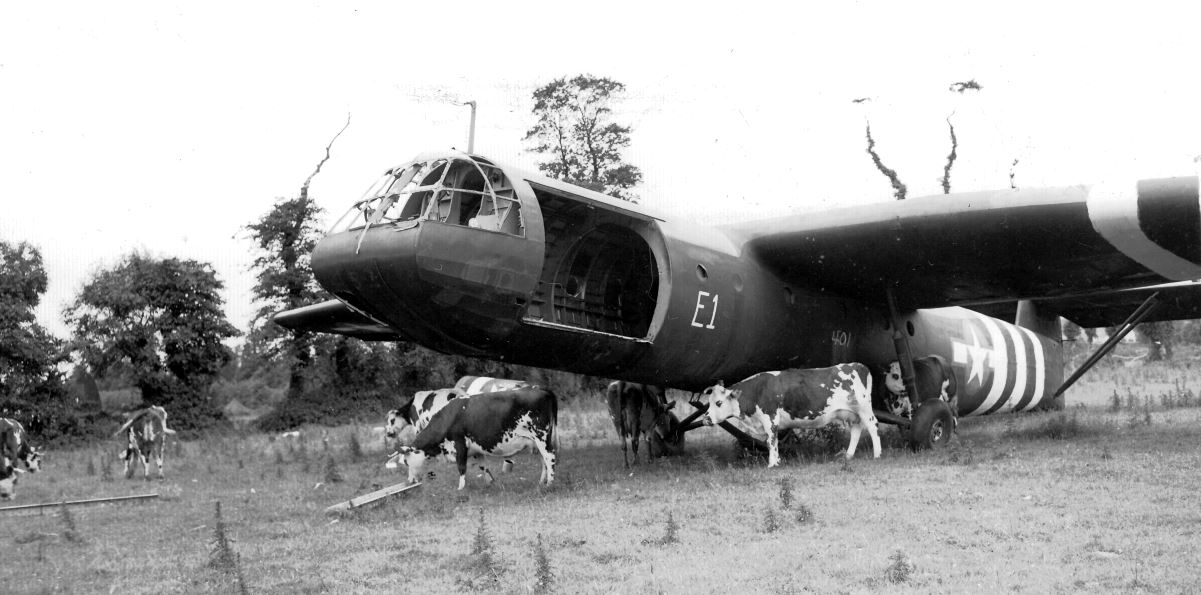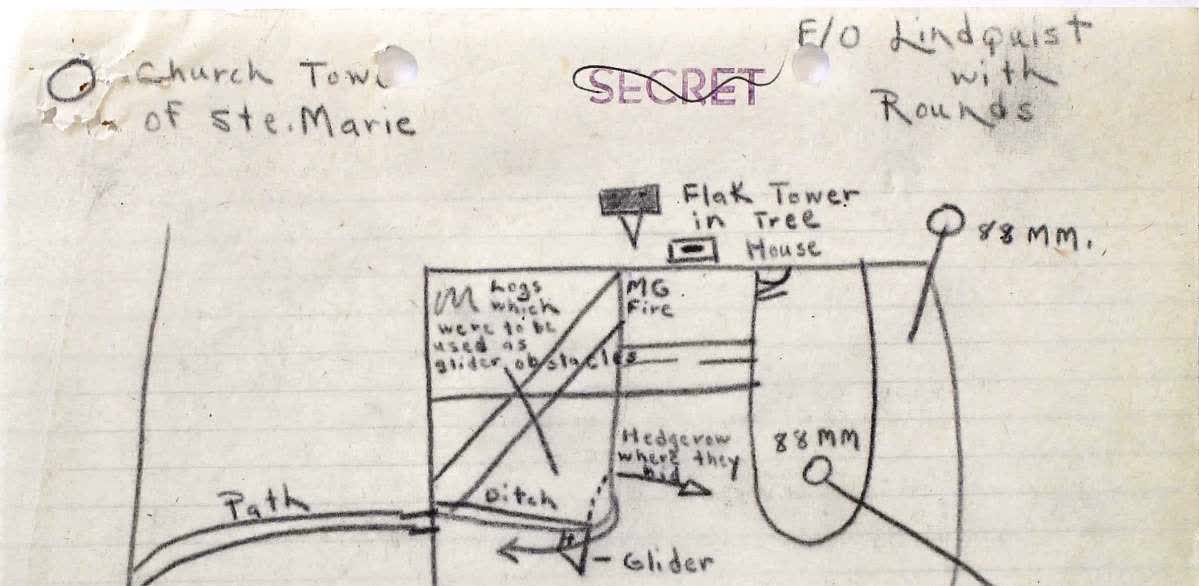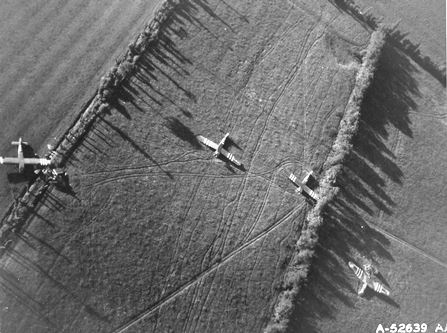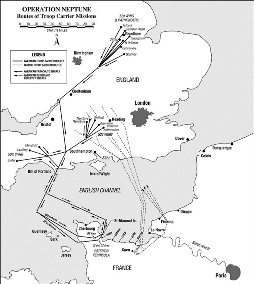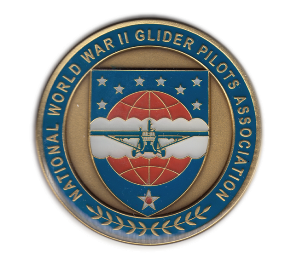National WWII Glider Pilots AssociationLegacy Organization of veterans National WWII Glider Pilots Association. | ||
|
Without a doubt, the Normandy invasion was the most important operation in WW2. After invasions in the "soft under belly" of the German Fortress Europe, an attack on the west coast was imminent. The idea of where and how was the biggest secret. That airborne troops were to be used was no secret. Since the development of Airborne operations by the German in 1940, almost all major invasions and campaigns were executed with the use of airborne forces. Now, the largest airborne operation up to that time was planned. A British Airborne Division was to land on the east side. Their goal was to protect the flank of the invasion beaches, to capture some bridges and German batteries. This resulted in one of the best glider landings throughout the war as in the opening stage of the invasion, British gliders landed yards from the bridges that were to be captured by the Glider Infantry carried in by the gliders. Today, the Pegasus Bridge is one of the most important historic places in the area of the British landings. On the other end of the invasion beaches were the landing grounds of the US Airborne Divisions. Two divisions were to land on the Cotentin Peninsula. The focus was to capture important bridges and causeways. The causeways were the routes for the invasion forces to get out of the beach area and reach the hinterland. Bridges are important as they are needed in offensive operations to advance or in defensive operation to block the enemy from crossing a river. The first gliders were to arrive in this area in the early hours of June 6, 1944; in two lifts, one flown by the 434th Troop Carrier Group and a second by the 437th Troop Carrier Group. These glider missions each had their own code name. The first two were Chicago (434th) and Detroit (437th). The gliders all landed in the dark. Without all the Pathfinder beacons set, flying through a cloudbank and enemy fire and the darkness, it was difficult to find the landing zone. The presence of trees, hedgerows and Rommel Asparagus made these night landings difficult to carry out. The lead glider of the mission crashed into a hedgerow, killing two of the four occupants, including General Pratt of the 101st Airborne Division. German reactions, the dark, all contributed to a hectic appearance of the Normandy battlefield where small groups of Airborne roamed around to find their units and objectives. On these first two missions, American CG-4A Waco"s were used. Later on the same day, more glider missions were flown. Keokuk (434th TCG), Elmira (437th, 438th, these landings were met by stiff German anti-aircraft fire. This, and small fields with hedgerows caused many problems. This was also the first time that the Americans used British Horsa gliders in an airborne operation. The wooden Horsas cracked up in hedgerows and trees. With a larger load then the CG-4A Waco, the number of casualties in the Horsa crashes were higher.
On the 7th, missions Galveston (437th and 434th) and Hackensack (439th and 441st) were executed. The circumstances of these glider landings were not much different from those of the previous day. These last missions were to bring in elements of the 82nd Airborne Division. Again CG-4A and Horsa gliders were used. This was the last time that the US used Horsa gliders in a combat operation. These glider missions were not the end of glider landings in Normandy. Some days after these missions, the 436th Troop Carrier Group executed resupply missions to Normandy with gliders landing on an airstrip. Among the glider pilots who flew this resupply mission were also pilots who had landed in Normandy a few days earlier. This was their second trip to Normandy. These later missions were without casualties. 
Courtesy National Archives/ NWWIIGPA Collection
ALLIES LAND IN FRANCE.....Gliders loaded with essential supplies land on a partially completed airfield somewhere in northern France. Despite the steady stream of gliders bringing in men and equipment from England, the work on the airfield goes on uninterrupted. 15 June 1944 
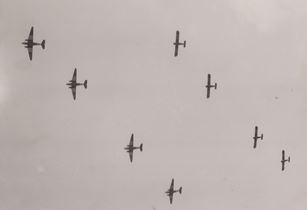
Courtesy of the National Archives / NWWIIGPA Collection A pattern of transport planes and gliders is pictured against a grey English sky as the 9th Air Force Troop Carrier Command sends load after load of airborne infantry reinforcements into the area where the Yank paratroopers were dropped in France earlier the same day, spear-heading the Allied forces who are fighting for the liberation of Europe. 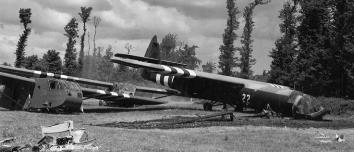
Courtesy of the National Archives / USAAF Signal Corps/ NWWIIGPA collection Back of photo caption: British and American gliders lie side by side in French pastures where they landed airborne infantry on D-Day. 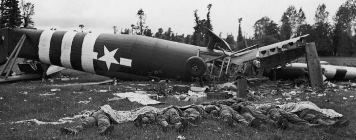
Courtesy of the National Archives / USAAF Signal Corps / NWWIIGPA collection Back of photo caption: Eight members of an Airborne Division, their faces covered with parachute shrouds, lie dead beside the wreckage of their glider, near Hiesville France. 6 June 1944 Signal Corps Photo #ETO-HQ-44-5112 Photo taken by RUNYAN Photo released 17 June 1944. [This is the 437th TCG glider #1, 7 June 1944 flight. Glider Pilots were F/O Richard G. Mercer T-60767 Pilot and 1st Lt. George G. Parker O-349331 as Co-Pilot. Lt. Parker later went on to fly a glider into Holland (Market Operation) in September '44 and Germany (Varsity Operation) in March '45.] National Archives Identifier: 6981972 “Army Air Forces film # TF 1-3711 "Covers the invasion of Normandy when 13,000 combat troops landed behind German lines in 2 hours; & footage of both the 82nd & 101st Airborne units in action. Also included is official RAF Combat footage of Normandy battle from the Air.
Accounts/Reports: An American Glider Pilot Remembers D-Day Col. Norman “Boots” Wilmeth, Glider Pilot, 91st Troop Carrier Squadron, 439th Troop Carrier Group
In Normandy, glider pilot Norman Wilmeth prepared his crew for a crash landing. In this vivid account he describes a surprising turn of events. Historical Record of the 88th Troop Carrier Squadron to the Commanding General, IX Troop Carrier Command, Historical Section A-2 Flooded Conditions |
11 Serials - 514 gliders
et Patrick Elie
Preparing for the Elmira Mission, Greenham Common.
Neptune Operation air assault route from England.
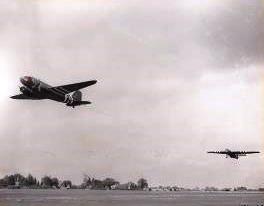
A C-47 and Horsa combination takes off from Greenham Common as part of the Elmira mission. The C-47 pictured here would later crash on a glider mission to Holland.
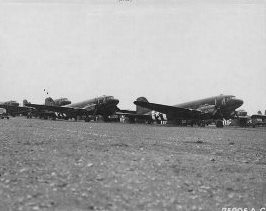
Tow planes and gliders of the 439th Troop Carrier Group are lines up on the runway before the Hackensack mission.
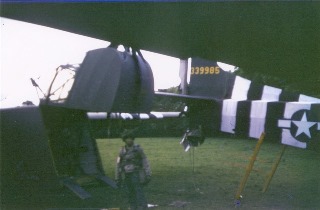
Two gliders of the very first mission in the Normandy fields.

